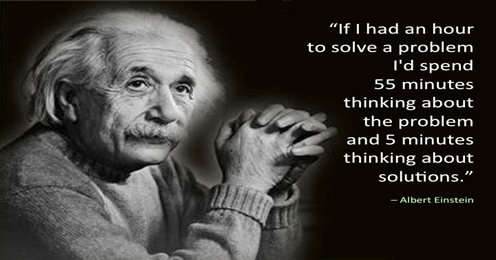Design Thinking - what is?
Design Thinking consists in a user-centered approach that can be used to optimize Innovation and Problem Solving processes. Design Thinking promotes creative thinking (out of the box) and also stimulates collective and collaborative teamwork dynamics.
Design Thinking takes in consideration that any technical solution is created in order to address the needs and desires of certain specific segments of users. Instead of the traditional methods were the solutions are created based on brainstorming sessions or already pre-conceived ideas, normally expressed through requirements, in the Design Thinking approach we take a step back so that we can observe the problem from a different perspective.
Design Thinking is applied through a set of phases where there are used different sets of techniques and tools throughout the process. These tools and techniques are used to fuel and guide our brain throughout the alternations between divergent and convergent modes of thinking. One good practice in Design Thinking is the creation of mixed and heterogeneous work teams is fundamental so that there may be different perspectives on both the problem and possible solutions.
There are different opinions and suggestions about what these phases should be. Although the most recognized and used worldwide is the one defined by the Stanford University and consists of 5 phases.
Empathy: Acquire knowledge about the user and the world around him in order to perceive the most correct questions to put. Analyze the context of the problem from the point of view of the user / client;
Definition: define what is the problem that we want to address;
Ideate: Creatively, try to find possible solutions for the problem that we are addressing;
Prototype: Materialize ideas or concepts into something that can be tested;
Test: Show and test the prototype with multiple users in order to collect feedback.
In a next article I will explain in more detail each one of these phases and also present a possible method to apply Design Thinking using tools and techniques such as Mindmaps, Personas and Brainstorming.



Congratulations @tugalife! You have completed the following achievement on the Steem blockchain and have been rewarded with new badge(s) :
Click here to view your Board of Honor
If you no longer want to receive notifications, reply to this comment with the word
STOPDo not miss the last post from @steemitboard:
Congratulations @tugalife! You received a personal award!
You can view your badges on your Steem Board and compare to others on the Steem Ranking
Vote for @Steemitboard as a witness to get one more award and increased upvotes!